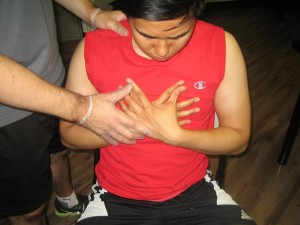Chest cold is a term used to refer to a communicable ailment called acute bronchitis. This is a condition affecting the lower respiratory tract in the lungs. The condition is usually triggered by a viral infection such as the flu or upper respiratory infection that has spread to the lungs. The condition results to inflammation of the bronchi and bronchioles.
https://www.youtube.com/watch?v=NxEPspHeE0o
What are the indications of a chest cold?
The indications of a chest cold are triggered by the inflammation of the airways of the lungs due to irritation or infection. The severity of the symptoms depends on the general health, age and medical history. Generally, healthy individuals end up with mild symptoms. As for those with chronic illnesses, the symptoms can be severe. The usual symptoms of chest cold include the following:
- Chest pain or tightness while coughing
- Chest congestion
The indications of a chest cold are triggered by the inflammation of the airways of the lungs due to irritation or infection. - Fatigue
- Chills
- Fever
- Wet, loose cough with thick whitish or yellowish phlegm
- Shortness of breath during exertion
What are the risk factors?
A chest cold can develop in any age group. The number of factors increases the risk of developing one but not all with the risk factors will develop one. The common risk factors include the following:
- Infants, young children or the elderly
- Chronic heart or lung diseases such as COPD, congestive heart failure, asthma and lung cancer
- Smoking
- Exposure to irritants or air pollution
Management
The objective of treatment for chest cold include reducing the risk of developing pneumonia and regulating the symptoms.
For mild cases of chest cold that occur in generally healthy older children and adults, they can be treated at home. For moderate to severe cases especially among infants, elderly or those with chronic diseases, hospitalization is needed. The commonly used treatment options include the following:
- Antibiotics if the cause is bacterial in nature. In severe cases, intravenous antibiotics are given or for infants and individuals with chronic diseases.
- Bronchodilators are given to promote better breathing and alleviate shortness of breath.
- Increase the intake of fluids to prevent dehydration.
- Use a cool-mist vaporizer
- Intubation of the airway using a breathing tube and mechanical ventilation is required in severe cases.
- Fever-reducing medications
- Oxygen therapy via a nasal prong or mask to alleviate shortness of breath and ensure that the vital organs such as the brain and the heart receives adequate oxygen.
- Adequate rest
- Suctioning if the phlegm is thick
More Information / Disclaimer
The information posted on this page on chest cold is for learning purposes only. Learn to recognize and manage respiratory conditions including chest cold by taking a standard first aid course with Red Deer First Aid.

